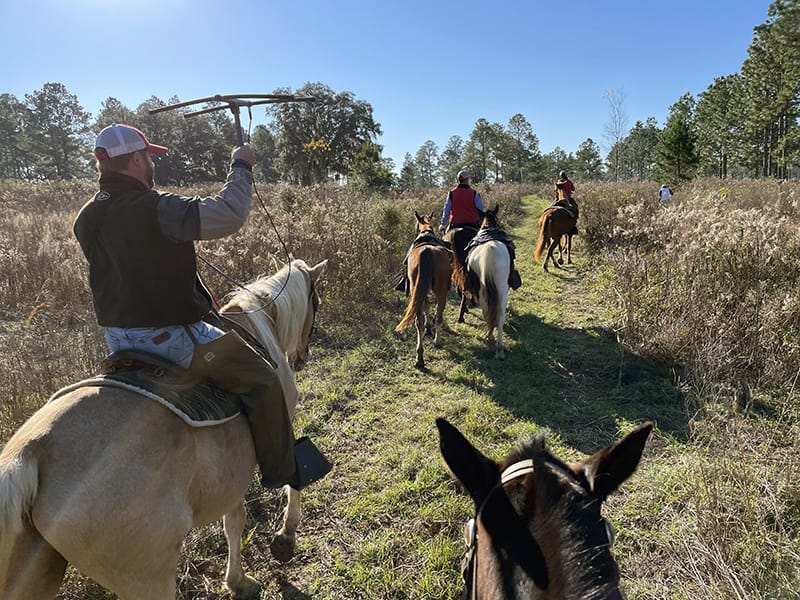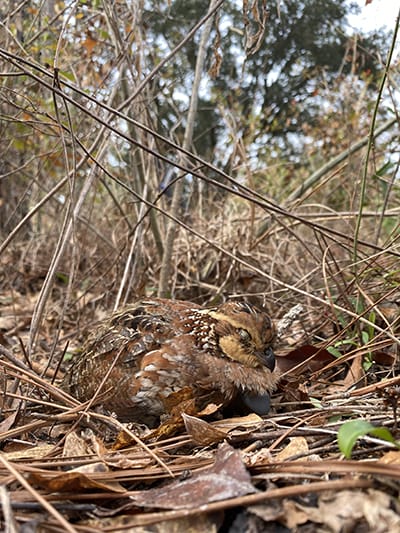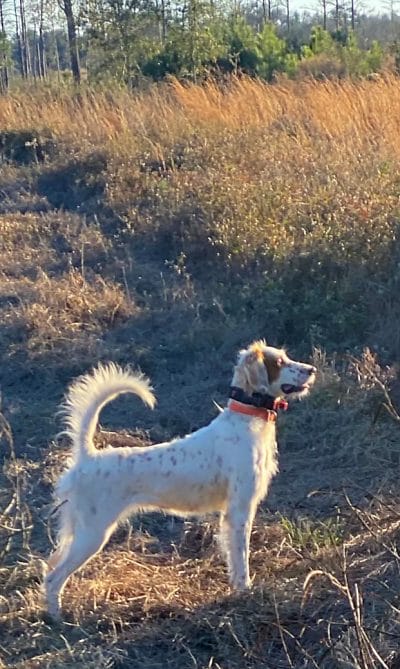A Reflection on the 2021-2022 Quail Hunting Season in the Red Hills and Albany Regions
By Alex Jackson, Game Bird Biologist
RED HILLS
As smoke begins to fill the skies of quail country, bobwhites are gearing up to bring next year’s crop of birds into the world. For quail hunters and quail managers alike, it is a time to reflect on the highs and lows of the season, while trying to develop rational and biological reasons for why things went the way they did.
We typically see a trend in hunt quality across our region, but this year seemed to have a mind of its own. We’ve heard reports of seasons ranging from record status to as much as 40% below average. General consensus is that the Red Hills took a hit last summer due to heavy rainfall; local populations were ultimately affected. However, the degree to which populations were affected seemed to vary by location within the region. Properties on the western and eastern periphery were seemingly less affected than those centrally located within the region, minus a few exceptions. This particular trend seemed to coincide with our pre-season predictions, derived from radio-collar birds last summer on Tall Timbers (i.e., western Red Hills) and Livingston Place (i.e., eastern Red Hills).
Bobwhite density on both sites was slightly above average, which had us optimistic for the hunt season. That being said, neither Tall Timbers nor Livingston Place were immune to the difficult hunt conditions that plagued both early and late seasons in the Red Hills. While we had a comparable season to last year in terms of average coveys seen per half day, the hot and dry weather seemed to make it difficult to string a series of quality hunts together, which is a theme we heard from multiple properties throughout the region.
While natural predation is a constant threat, one upside to challenging hunt conditions is that more birds likely have a chance to survive the quail season. At the end of this year’s season, radio-birds on Tall Timbers and Livingston place demonstrated 55% and 64% survival, respectively. This is average to above average for this time of the year, and hopefully is an indicator of being in a good position heading into the breeding season.

Tall Timbers’ biologist tracking quail during crippling loss study on Livingston Place. Photo by Kim Sash
ALBANY
The 2021-2022 hunting season in the Albany region was another good one for the majority of properties. Many of these places were coming off of a string of years with high adult survival, good rainfall, high brood survival, and high cotton rat numbers. All of these factors combined resulted in some places having near-record fall densities coming into the season. While the bird numbers were looking promising, mother nature did not provide much help, as January was the only month with any amount of cooler weather. Despite tough conditions for most of the season, it always helps the hunting when you have plenty of birds, even when the weather doesn’t cooperate. Most properties around the region reported covey finds comparable to last year’s high numbers, and several properties marked this season as their best ever.
We have been hearing for several years now about how wild the coveys have become, in both Albany and the Red Hills, with this year setting a new standard. Similar to what we discussed in last year’s Spring eNews (Vol 14, No. 1), we believe this is due to behaviors associated with high density populations, as well as an old age structure. Much of this can be attributed to record high adult survival coming into the hunting season. Adult percentage on our primary Albany study area was 33% compared to the long term average of 20%. This results in a 16-bird covey having 4 birds in their second hunting season, and at least 1 in its third. These veteran birds have gotten accustomed to the sound of an approaching hunt party; it only takes 1 bird in a covey to make them all fly out ahead of you. While there is no such thing as too many quail, it can result in a lower shot into percentage.
Our radio sample of quail on our primary study area in Albany is faring well so far this winter. Our survival through the end of February was at 61%, which is about average for this time of year. We are in a good position with current bird densities and are hopeful these high survival trends continue. As many of you know, one of our favorite sayings is that “dead hens don’t nest;” keeping them alive this spring is the number one priority to maximize your carryover into the breeding season. That being said, we caution about burning too much, and urge continual feeding throughout the spring, as the current seasonal outlooks predict below average rainfall and above average temperatures for the next few months.
Research Update
This year we initiated a few new projects in the Game Bird Program. As many of you are aware, one of these projects is a wide-spread crippling loss study in collaboration with the University of Georgia and the Jones Center at Ichauway. The study spans our Livingston Place and Tall Timbers properties in the Red Hills, as well as the Tall Timbers regional quail programs in Albany, Central Florida, and the Western Pineywoods.

Crippled bird found during study. Photo by Justin Rectenwald
Additionally, many of you participated in a post-season dog training survey last year. We greatly appreciate your responses to the questions in this survey and have initiated the graduate student project based on this survey. This study aims to evaluate bobwhite stress levels and subsequent breeding season demographic responses to various rates of post-season encounters during spring dog training. We are excited about both of these projects and look forward to presenting additional information in the coming months.

Setter on point during spring dog work. Photo by Clay Sisson
The post A Reflection on the 2021-2022 Quail Hunting Season appeared first on Tall Timbers.
